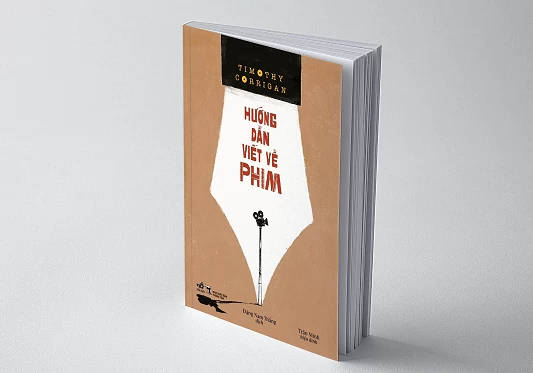The Guide to Writing About Films is a useful book that helps improve the ability to perceive, comment on, and evaluate films for movie lovers.
With its tight, methodical structure, Professor Timothy Corrigan's work provides a clear, detailed roadmap for developing professional writing skills about cinema.
 |
| The book has just been reprinted with many significant changes. (Source: Nha Nam) |
As Professor Emeritus of English and Film Studies at the University of Pennsylvania (USA), he focuses on contemporary international cinema and documentary film.
The book is not only an essential resource for students and lecturers of film, but also a reference source for anyone who wants to improve their ability to appreciate and comment on the seventh art.
In the context of film criticism and evaluation activities in Vietnam being weak due to the lack of modern tools and textbooks, the Film Writing Guide is a book that combines a writing guide and a film studies textbook.
The book also updates the content on digital technology in film studies, ensuring high topicality and application; it can be used in a variety of courses, from writing to film studies, as a supplementary or primary text.
Through the combination of theory, practical examples and applied exercises, the book can become a powerful tool to help readers develop profound thinking and sophisticated writing skills about films, meeting the urgent needs of the current film research and criticism industry.
This is a revised and supplemented reprint of the book Guide to Writing About Film (author Timothy Corrigan, translator Dang Nam Thang, published by Tri Thuc Publishing House, Nha Nam and the FORD Fund Cinema Project, Hanoi University of Social Sciences and Humanities in 2010).
Vietnamese copyright belongs to FORD Fund Film Project, Hanoi University of Social Sciences and Humanities and Department of Art Studies (Faculty of Literature) currently.
This edition has been revised and supplemented by Nha Nam with a few significant changes: completing the introduction of learning objectives at the beginning of each chapter; integrating and emphasizing "writing prompts" into each chapter, encouraging students to stop and apply what they have just learned to analyze a specific or familiar film they are watching; and expanding the content on digital technology.
Technology and digital media, from the Internet to Blu-ray discs, are increasingly becoming important factors in how we watch and study films.
The new edition will therefore expand the discussion of the impact of digital technology not only on how we view and understand films, but also on how we study and write about cinema.
In addition, this edition is updated with examples and illustrations from the latest films. Although introducing old and foreign films is important to broaden the reader's knowledge and stimulate curiosity, examples of contemporary films cannot be ignored, helping readers to easily identify and pay more attention to films.
Source: https://baoquocte.vn/ban-do-dan-loi-kham-pha-nghe-thuat-cho-tin-do-dien-anh-290804.html




![[Photo] Overcoming all difficulties, speeding up construction progress of Hoa Binh Hydropower Plant Expansion Project](https://vstatic.vietnam.vn/vietnam/resource/IMAGE/2025/4/12/bff04b551e98484c84d74c8faa3526e0)


![[Photo] Closing of the 11th Conference of the 13th Central Committee of the Communist Party of Vietnam](https://vstatic.vietnam.vn/vietnam/resource/IMAGE/2025/4/12/114b57fe6e9b4814a5ddfacf6dfe5b7f)























































































Comment (0)